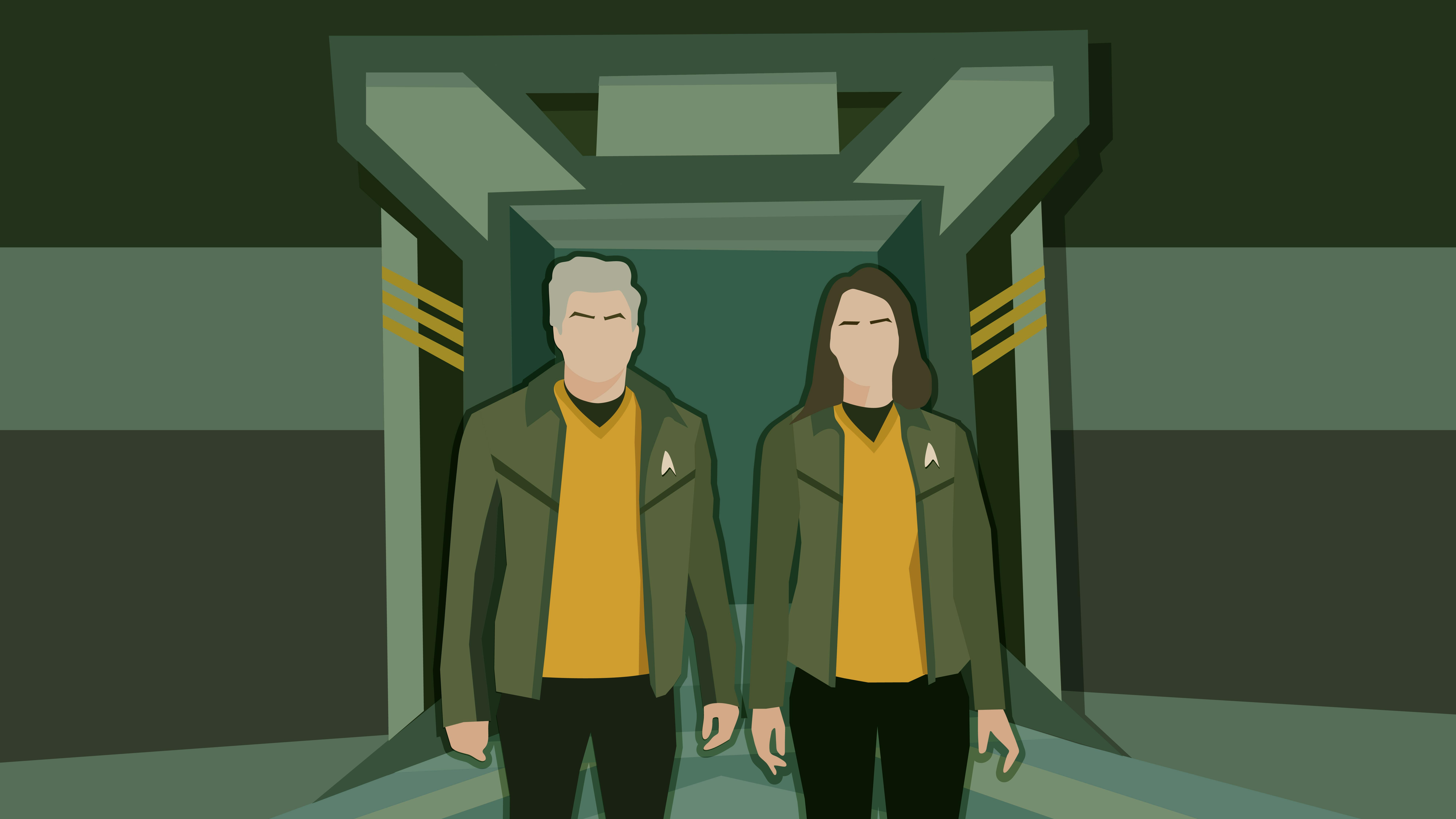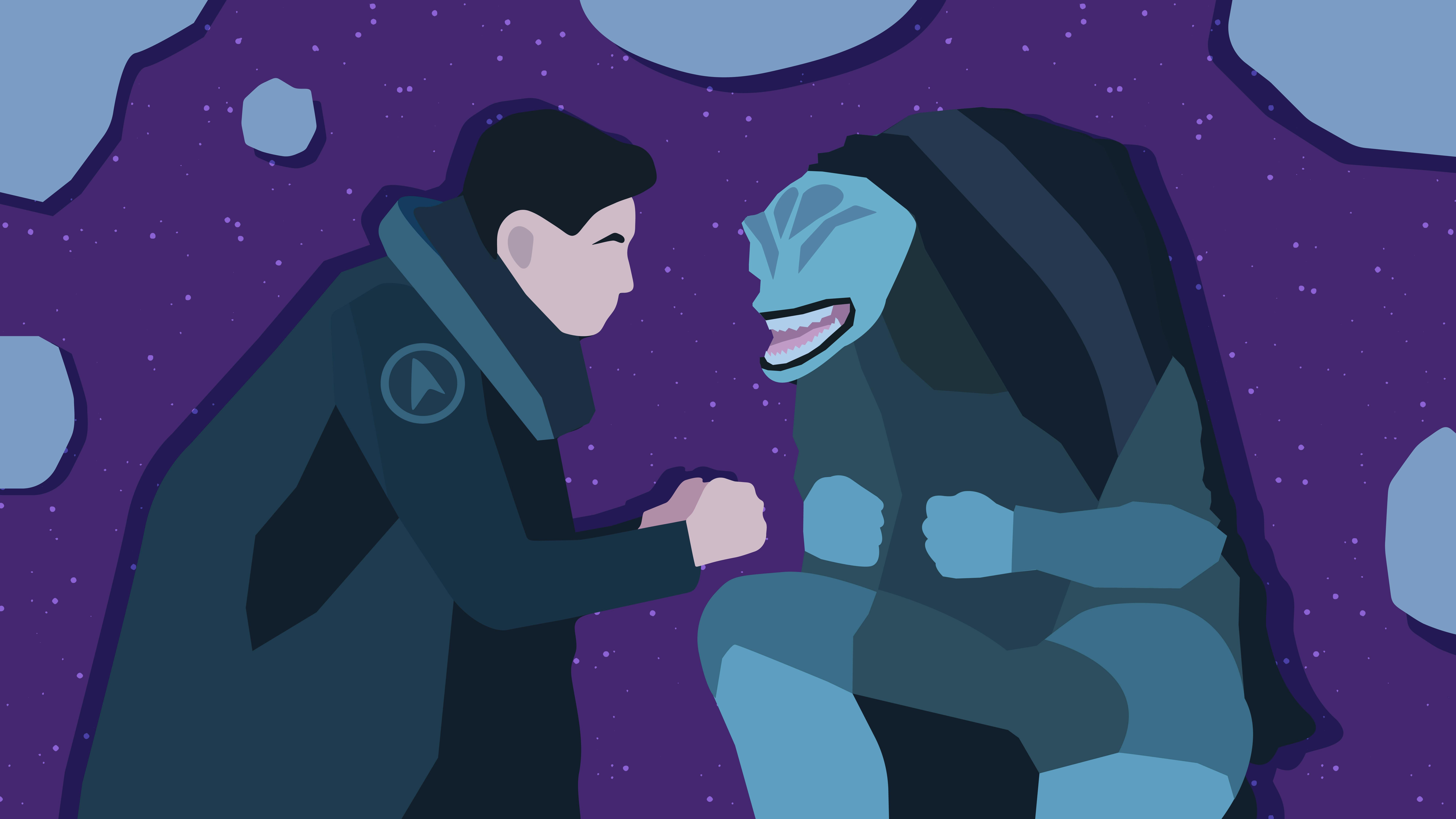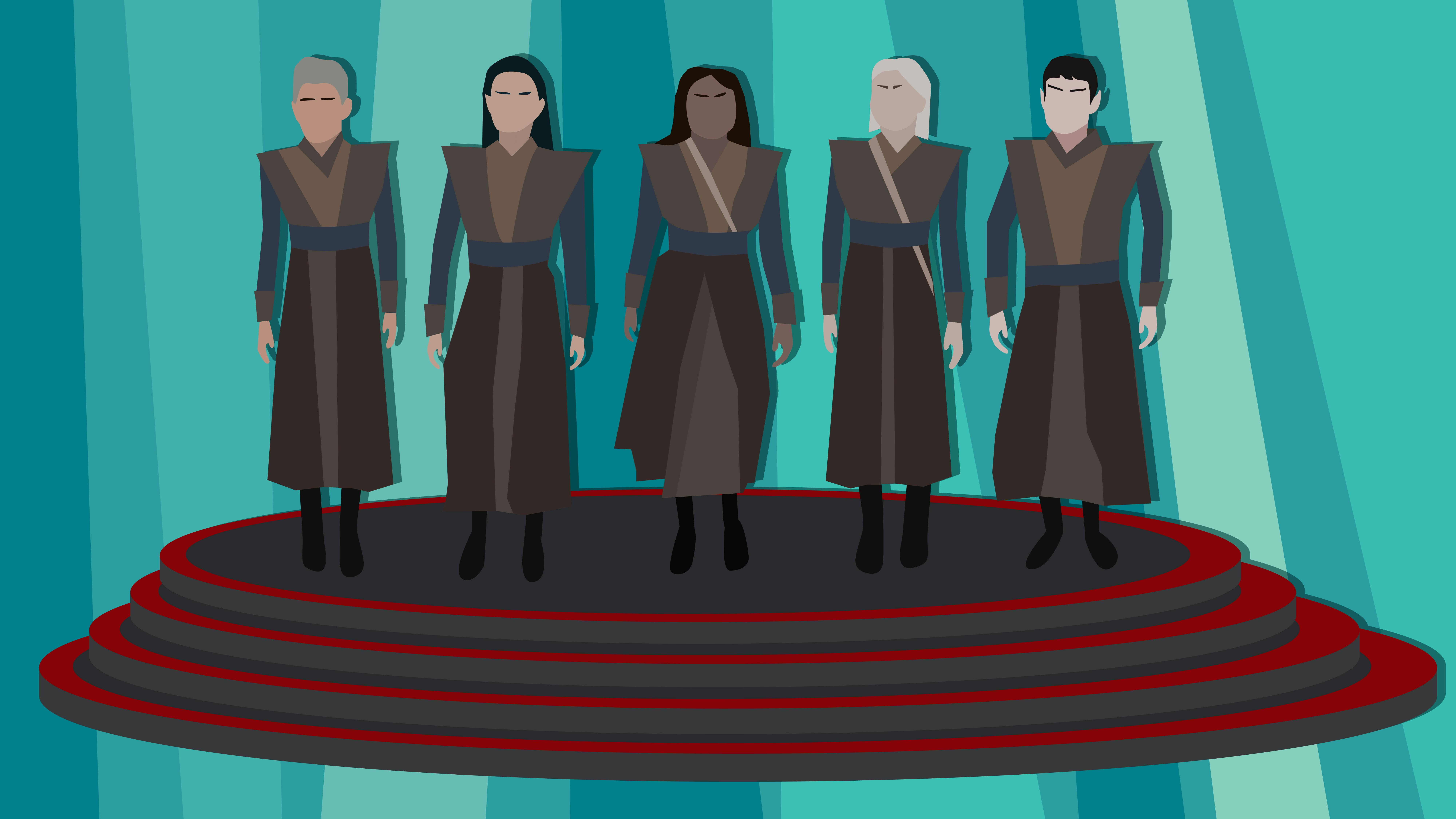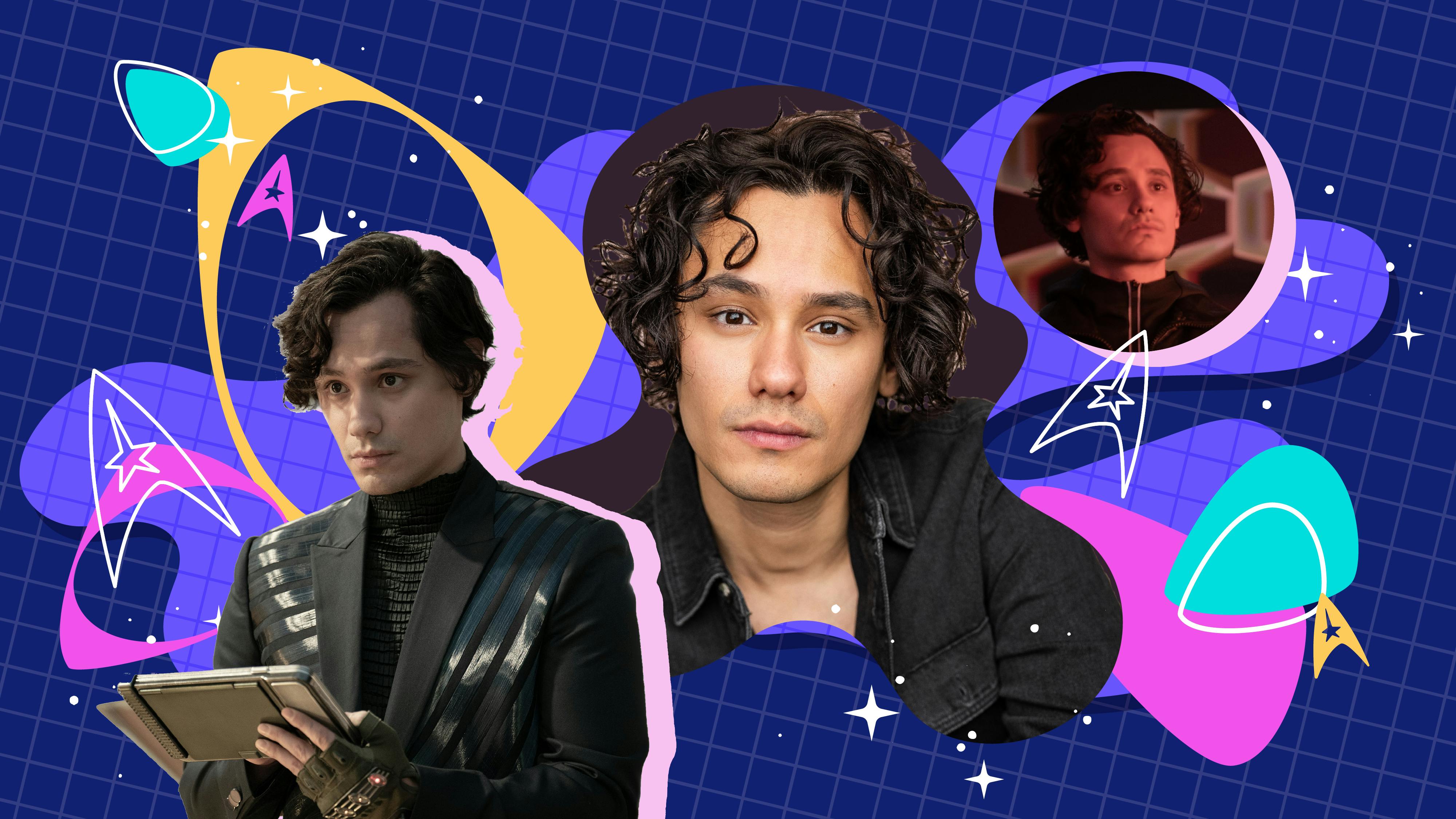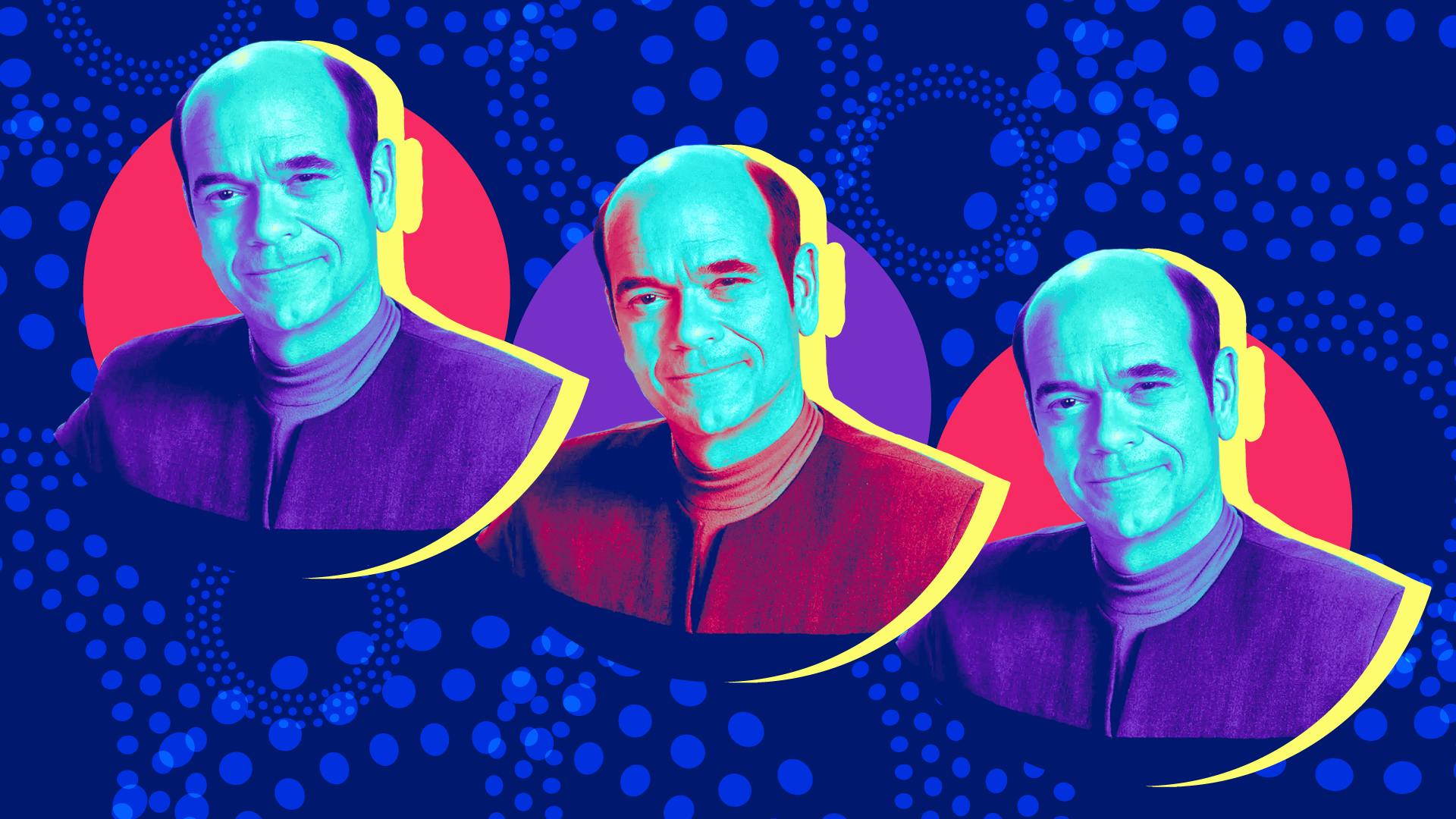
StarTrek.com
"Please state the nature of the medical emergency."
"Doesn't anyone know how to turn off the program when they leave!"
Originally designed for emergency purposes only, the acerbic Emergency Medical Holographic (EMH) was forced to run full-time when the Intrepid-class starship, U.S.S. Voyager, is stranded in the Delta Quadrant, propelling The Doctor to the ship's chief medical officer.
Portrayed by the excellent Robert Picardo, every episode with The Doctor is great as we witness his trajectory across the series' seven seasons. Here we've picked 8 of our favorite episodes we deem The Doctor's finest hours.
"Virtuoso"
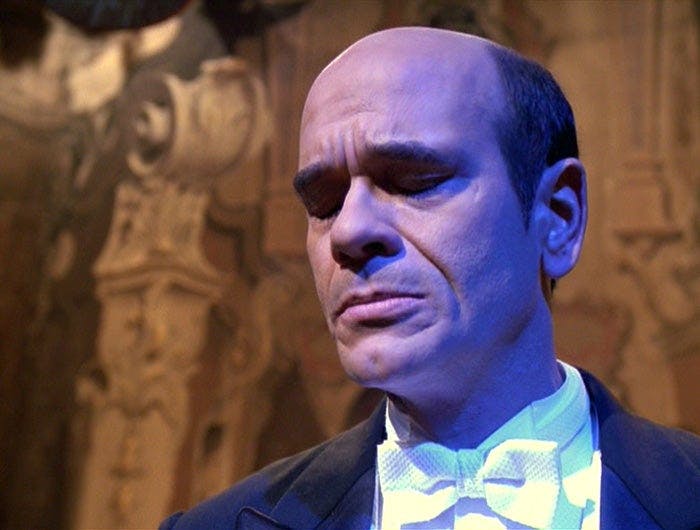
"Virtuoso"
StarTrek.com
In the sixth-season episode, the Voyager crew meets the Qomar, which typically closed off their homeworld to outsiders, while helping their ship make necessary repairs. While tending to some of his new patients' medical needs, and humming along during the process, the Qomar became exposed to music for the first time. Enthralled with The Doctor's voice, he and the rest of the crew are invited to their planetary alliance where he's starring in a musical concert in order to introduce the concept of music to its inhabitants.
Following his performance, The Doctor receives a standing ovation, and then Voyager's communication systems is inundated with transmissions — fan mail for the maestro. Pleased with all the attention, The Doctor lets his duties slip believing the crew doesn't appreciate his talents and hands over his resignation, taking the Qomar up on their offer to stay behind on their planet when Voyager leaves.
Soon, The Doctor learns that the species of mathematicians could not see and appreciate the passion, beauty, and artistry he brings to music; they're more fixated on the mathematical angle and design a superior holomatrix that can hit notes The Doctor cannot. While lamenting his short-lived musical career, the EMH discovers who truly appreciates him and his talents.
"Living Witness"
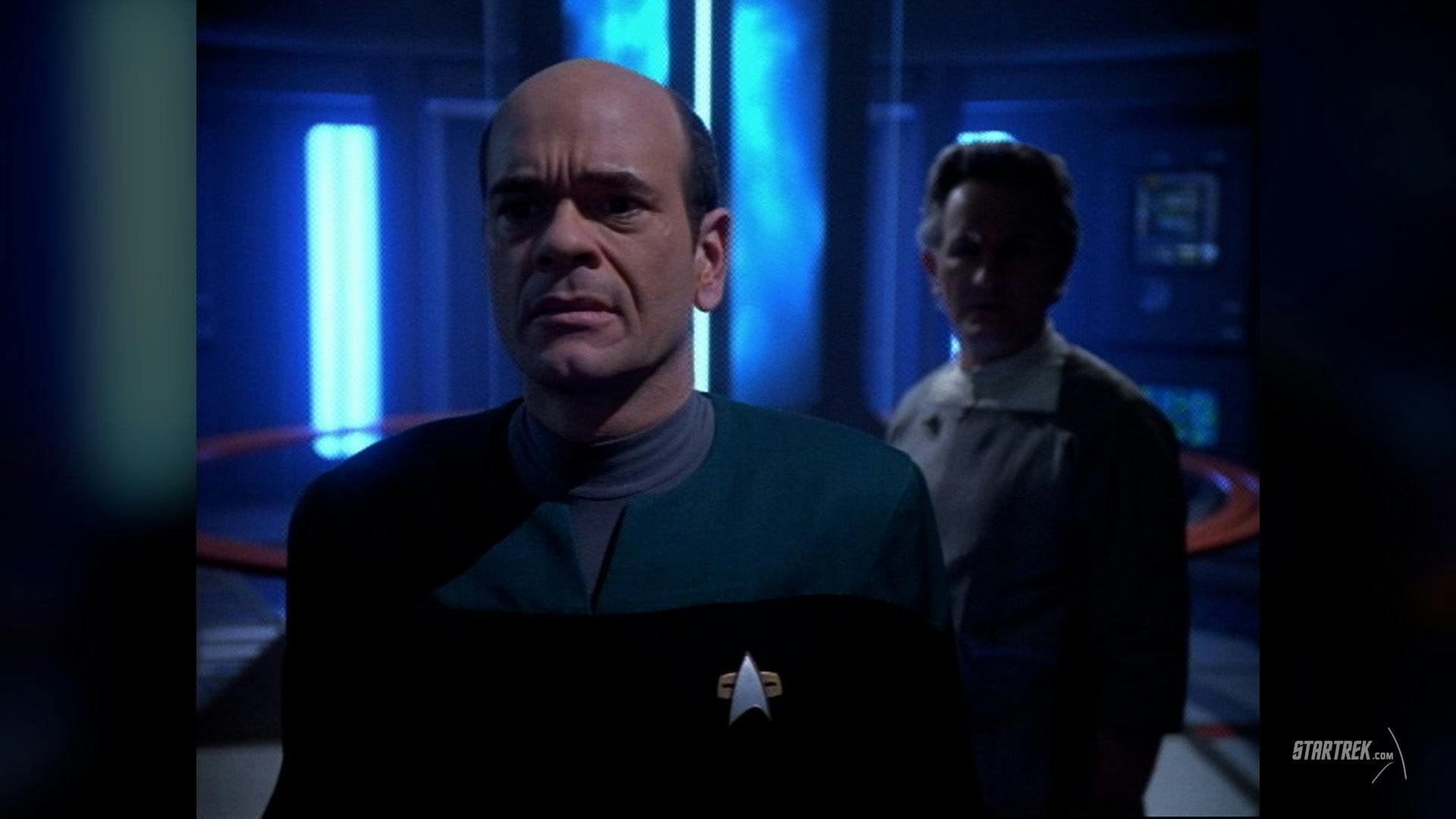
"Living Witness"
StarTrek.com
The Doctor is reactivated 700 years into the future at the Kyrian Museum of Heritage where the Captain Janeway and the Voyager crew are depicted as violent people who did not hesitate to destroy anything or anyone standing in their way of getting home in inaccurate recreations. Not only that, they're blamed for a civil war with the Vaskans that nearly wiped out the Kyrian race.
The fourth-season episode has viewers reflecting on how historical accounts could be weaponized and maintain the status quo of unresolved ideological tensions as The Doctor works to correct the accurate portrayal of events.
"Real Life"
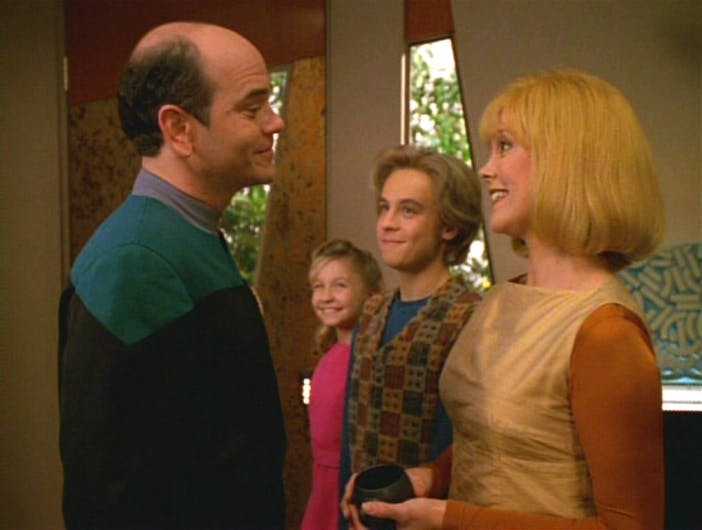
"Real Life"
StarTrek.com
In this third-season story, The Doctor attempts to expand the horizons of his programming by creating his perfect holo-family — his wife Charlene, his teenaged son Jeffrey, his daughter Belle, and him as the patriarch named Kenneth.
After Kes and B'Elanna visits them during a family meal, B'Elanna modifies the holoprogram to be more realistic, much to The Doctor's displeasure. As his relationships with his family spirals, The Doctor learns Belle suffered severe brain trauma after an injury. Unable to prevent her death, The Doctor stops the program. However, it's the advice of Tom Paris to return to the program and face the pain that life sometimes delivers.
"Latent Image"
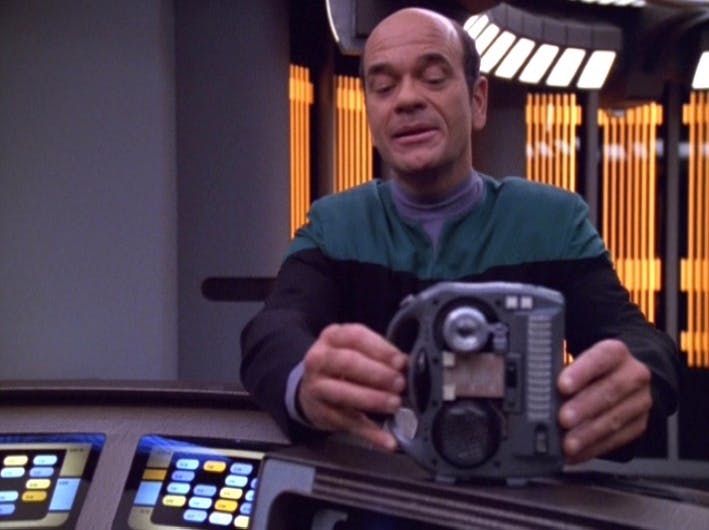
"Latent Image"
StarTrek.com
The fifth-season episode shows us The Doctor's fondness for his Holo-Imager. While scanning Harry Kim, he finds scarring near the ensign's spine that he doesn't recall performing. He soon discovers he's missing certain memory files that have been deleted from his program.
Calling upon Seven of Nine to help him run a self-diagnostic, they learn that it's Janeway who has been tampering with his short-term memory buffer as well as holo-images around a particular incident. The captain was trying to spare him from a painful time that caused a conflict in his programming after he was forced to perform a life-saving procedure on one officer, knowing that the other would have to die.
With his memories restored, The Doctor begins agonizing over the same question of how he could choose one life over another. There is a battle going on between his original programming and what he has become. The crew keeps vigil with him, hoping that eventually he will forgive himself and learn to accept his decision.
"Author, Author"
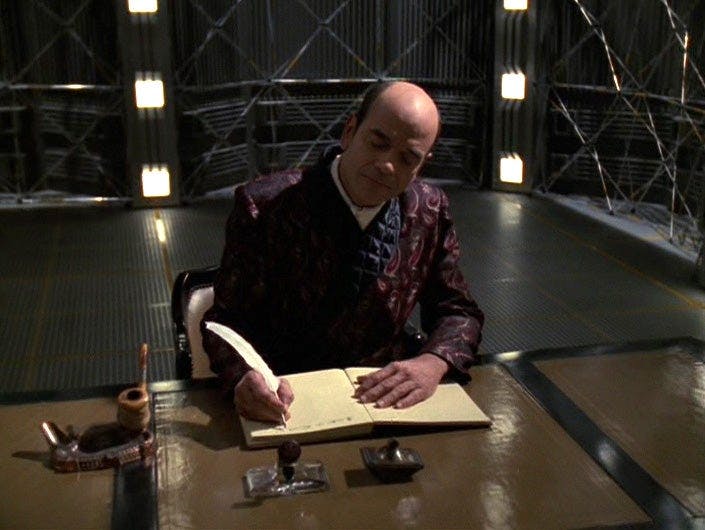
"Author, Author"
StarTrek.com
Similar to Data's plight in "The Measure of a Man," the seventh-season episode tackles The Doctor's rights when his holonovel, "Photons Be Free," which depicts the Voyager crew in a terrible light, is published without his permission.
Janeway questions if he feels oppressed, but The Doctor defends his work, claiming it's a work of fiction with an important message — he intended to draw attention to the plight of his "brothers" in the Alpha Quadrant, other EMH Mark Ones like him who have been condemned to menial tasks. Before he's able to make edits that don't hurt the feelings of the people he cares about, he learns that his publisher has proceeded with the previous draft.
Janeway demands a recall and apology, and points out that authors have rights, but the publisher Broht responds that under Federation law, holograms have no rights. This pushes into motion a hearing that seeks the same rights for The Doctor as any flesh-and-blood person.
"Revulsion"
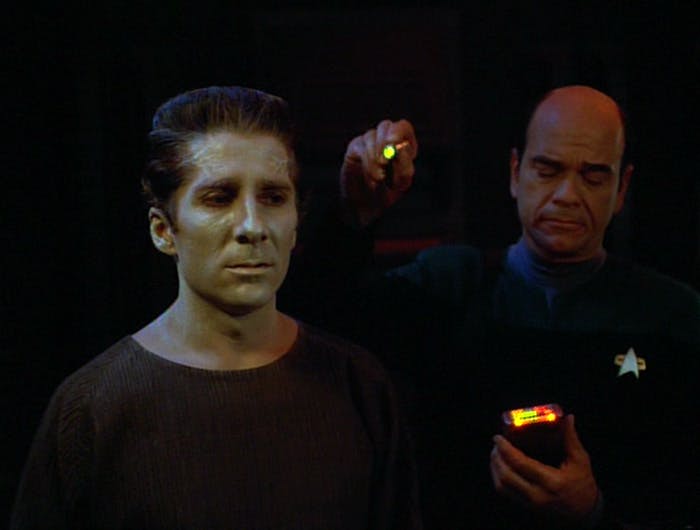
"Revulsion"
StarTrek.com
This fourth-season episode has the Voyager crew appreciating The Doctor's unique —and stable — personality. When they investigate an automated distress call from an alien holoprogram who reports that his crew is dead, Dejaren is pleased to find another "lifeform" like himself.
The hologram says that his crew became infected with a deadly virus, which killed them all. Dejaren is awed by The Doctor's freedom and abilities; his crew never let him out of his chamber or treated him as anything other than machinery. When B'Elanna is repairing Dejaren's systems, he lashes out at her, castigating her organic body and way of life. The Doctor discovers the hologram is pathologically bitter toward "organics." Things take a turn when Dejaren is unable to convince The Doctor that holograms were a higher form of life.
"Tinker, Tenor, Doctor, Spy"
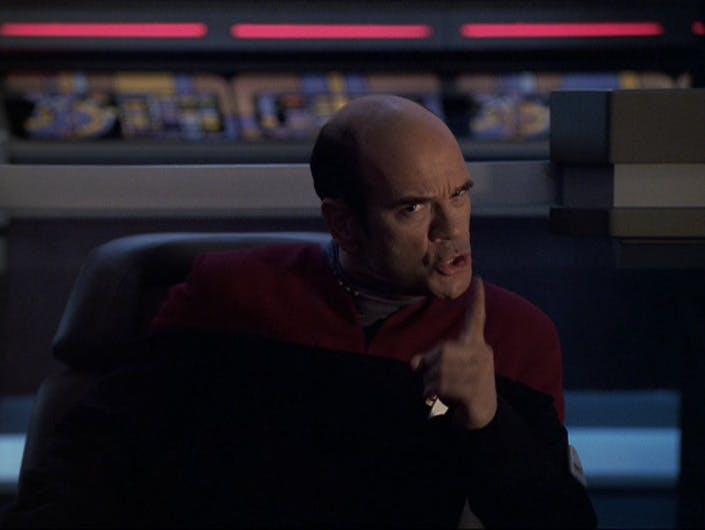
"Tinker, Tenor, Doctor, Spy"
StarTrek.com
Listed as Robert Picardo's favorite comedic episode in an interview with StarTrek.com in 2010, the sixth-season episode explores one of The Doctor's daydreams.
Disappointed because he wanted to travel with the Away Team to an unknown planet, The Doctor experiments with his programming by giving himself the ability to daydream, which he does so at the most opportune moment when alien raiders spy on Voyager, hoping to strip it for its parts. Fortunately for them, the daydreams confuse the raiders on the ship's actual defenses.
However, as the raider is embarrassed that he confused the daydreams for actual realities, and fearsome of revealing the truth to his superiors, he warns The Doctor of the impending attack but requests the EMH to enact his Emergency Command Hologram to trick his commanders.
"Body and Soul"
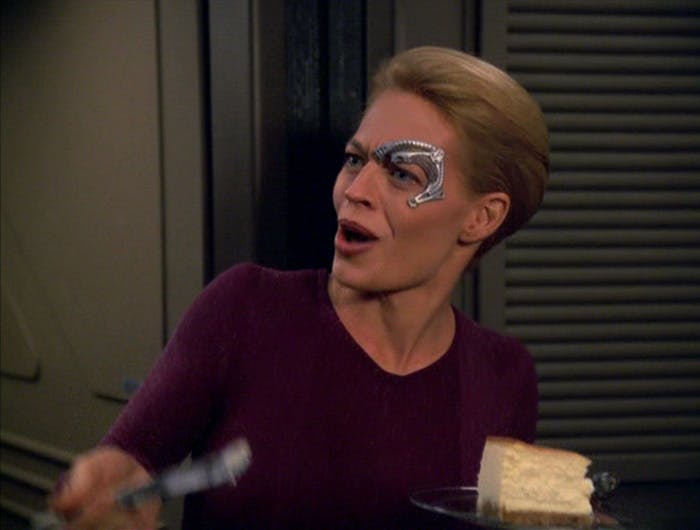
"Body and Soul"
StarTrek.com
When the crew encounters a species who hunted and destroyed "photonic insurgents" aka holograms in this seventh-season episode, Seven of Nine ends up hiding The Doctor's program in her Borg implants, which gives him control of her body and functions.
This allows The Doctor to have sensory experiences like taste and touch for the first time, giving Jeri Ryan and Robert Picardo to exercise their comedic chops.

